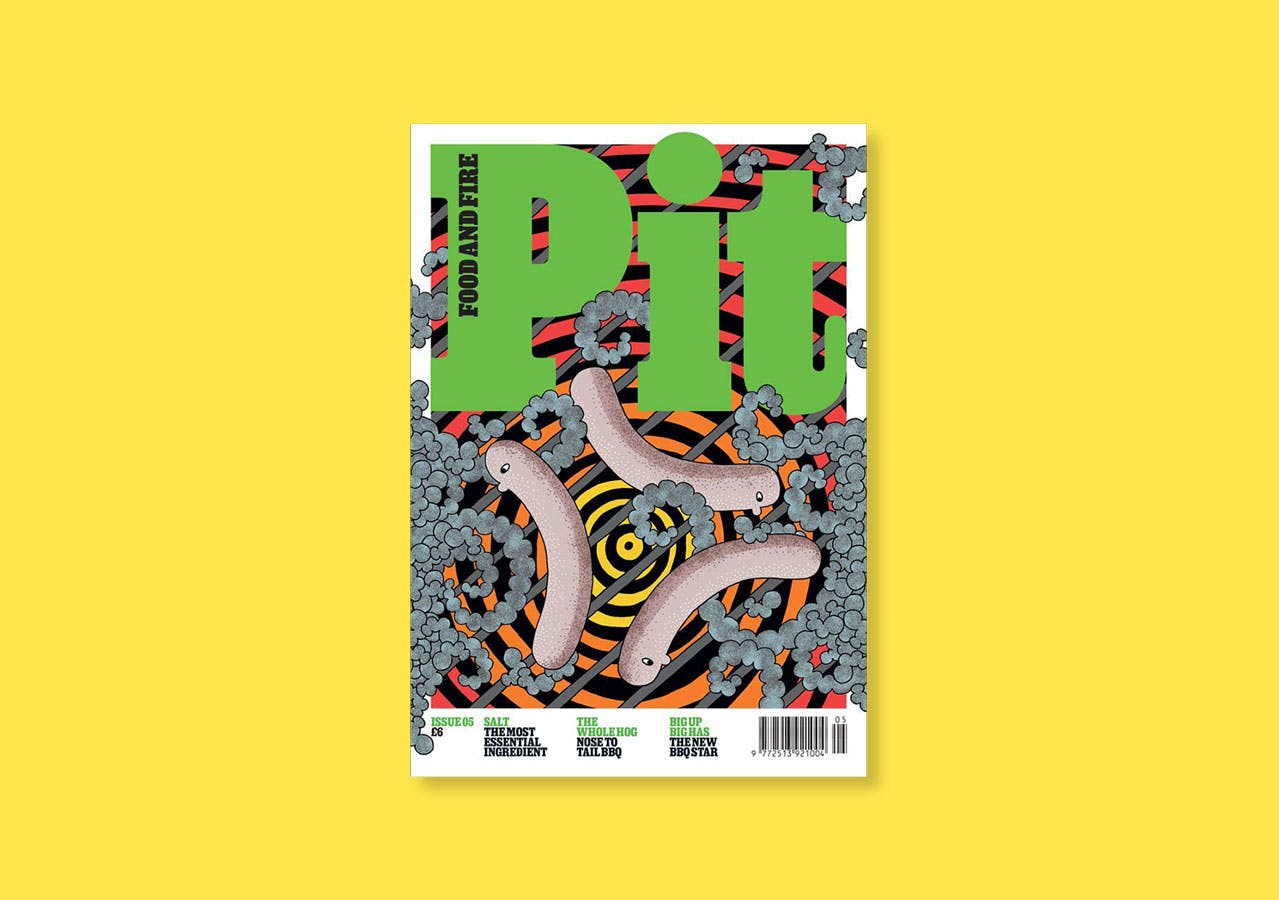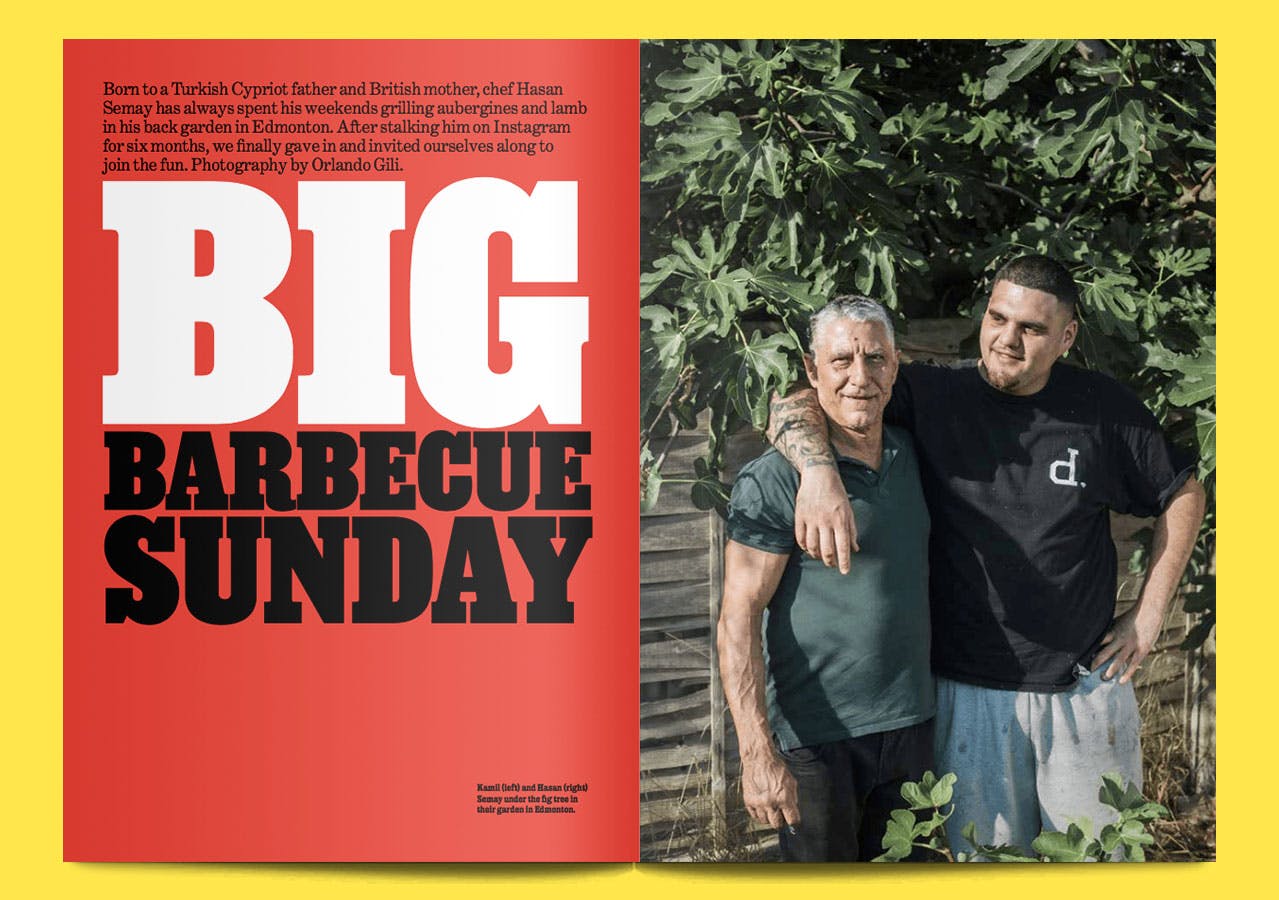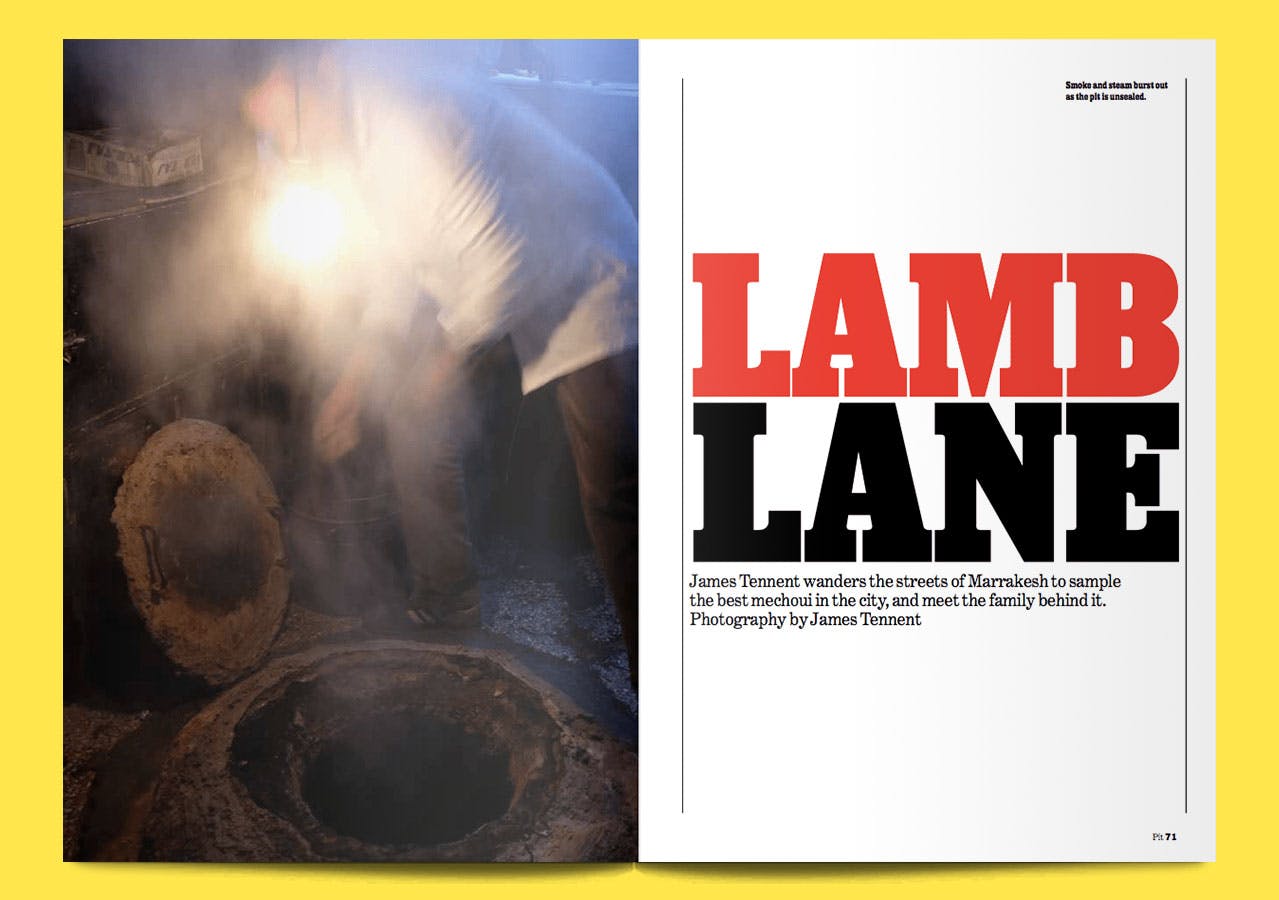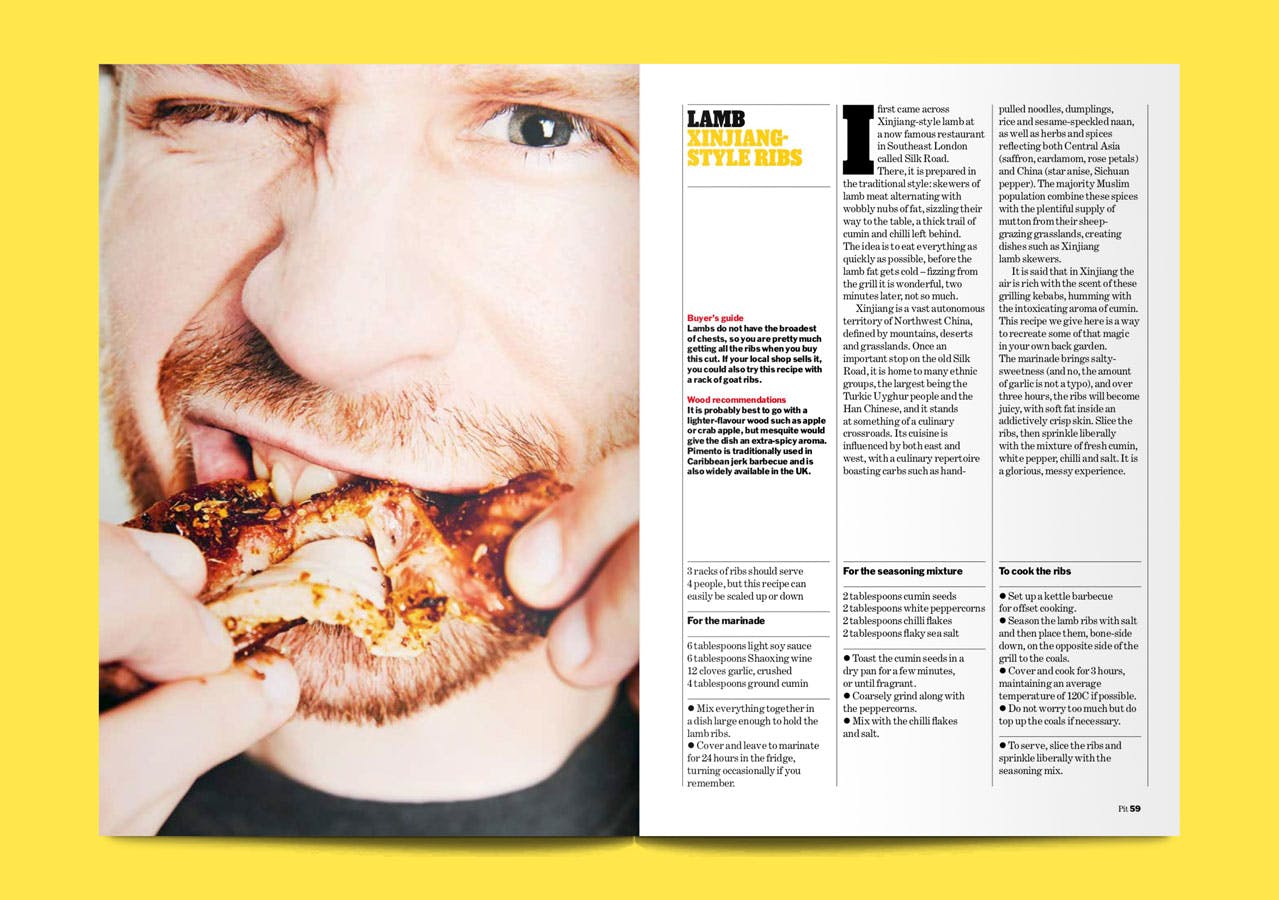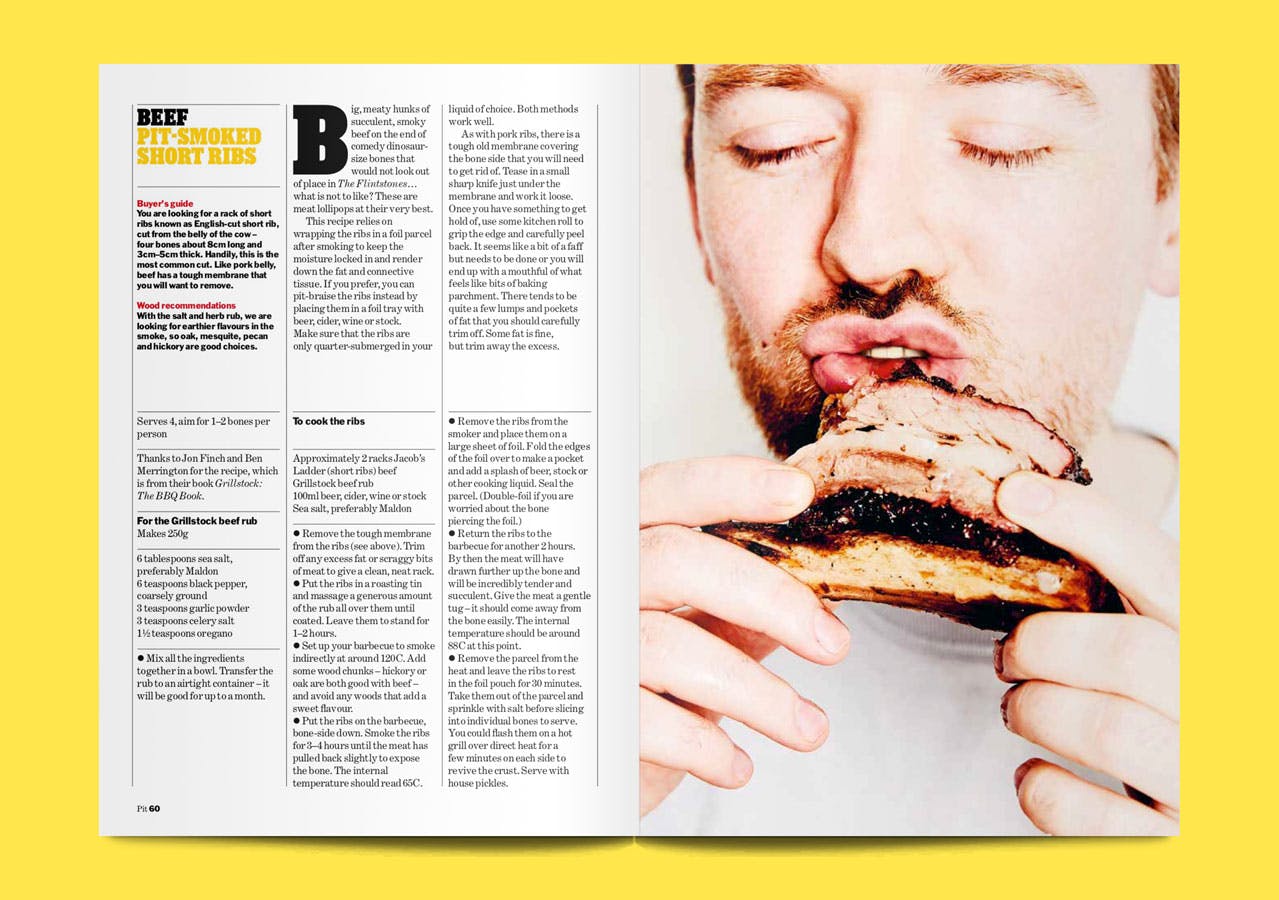Beer, barbecue, and why McDonald’s can’t jerk
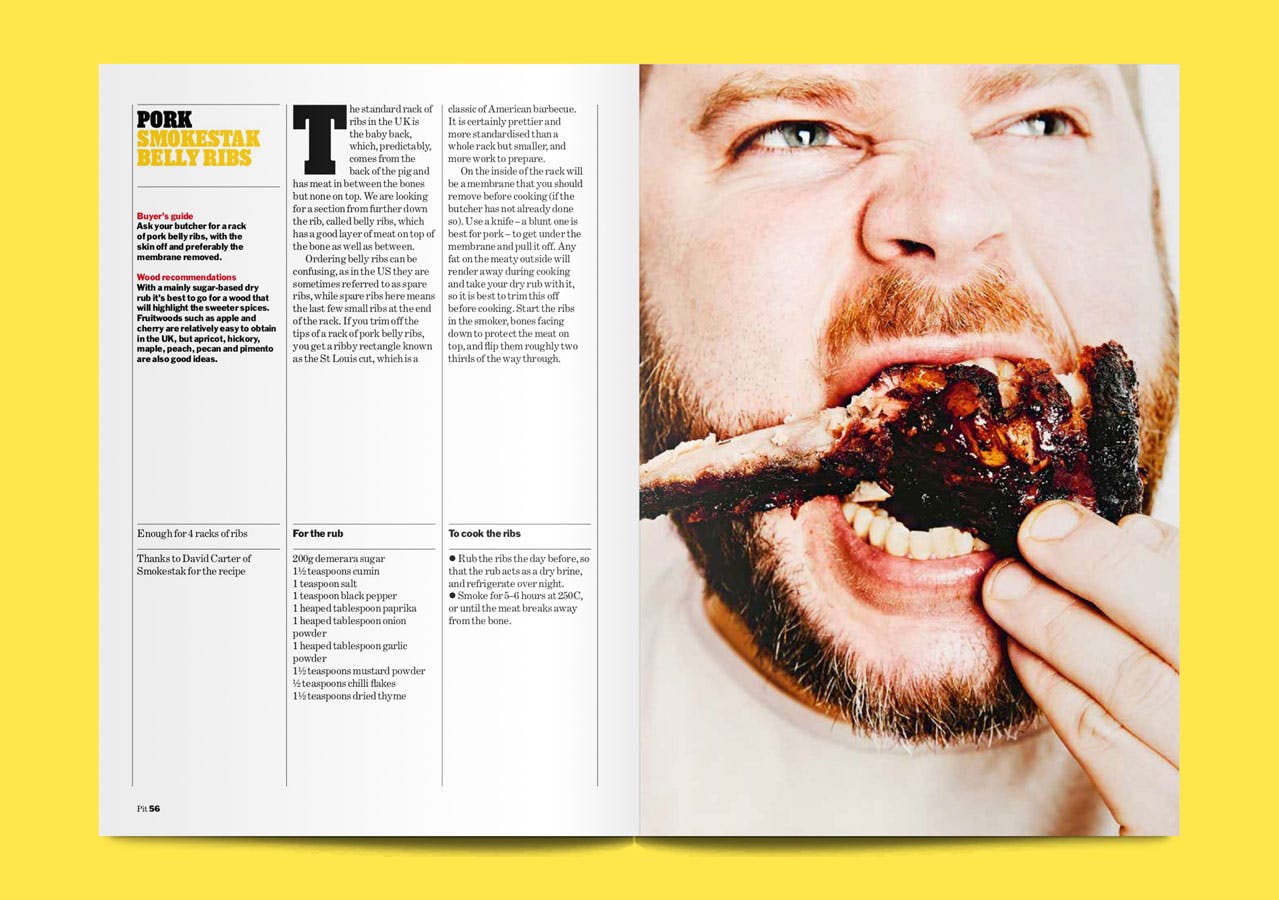
All about barbecue, Pit talks about food in a way that is unusually vivid. There are no pictures in this magazine of thin women holding poké bowls. Instead, meat is photographed in messy close-up, often bloody. The people doing the grilling look focused in an unposed, legitimately greedy way. In one feature, Turkish-Cypriot chef Hasan Semay — who is Instagram-famous for slow-mo tossing pasta — cooks a barbecue in Edmonton with his family; he chats about the restaurant industry (“it’s a cock measuring thing”), and his realisation, as a child, that if you stood next to the barbecue, you would get fed first (“it’s just me being a fat shit to be honest”). Other high-points include a pilgrimage to Texas to meet Tootsie, “‘a muscular woman with snow white hair and 10 great grandchildren” — who at 84 years old, runs arguably the best BBQ restaurant in the world.
Editor Helen Graves and art director Holly Catford told us why mainstream food magazines never photograph people actually eating, and talked us through what they’d choose for their final meal on earth.
You interview Caribbean food expert Riaz Phillips, who levels really interesting criticism at McDonald’s: “there’s nothing wrong with people who aren’t black or whatever doing jerk chicken, it’s when McDonald’s starts doing, like, jerk burgers”. Can you unpack that a little for us?
Helen: There have been discussions recently in the food world and the media about the cultural appropriation of food, which is when the food of a marginalised culture is misrepresented and profited from. This is why people are upset when high street lunch chains use udon noodles in ramen, or when — as Riaz mentioned — huge corporations like McDonald’s make burgers with jerk. For many people eating, this may be their first or only experience of ‘jerk’. It’s not that people can’t adapt recipes, or cook the food of other cultures, but when the Westernisation of food to make it more accessible is equated with improving it, or the food has been carelessly and thoughtlessly misrepresented, then there is a problem.
One piece in the issue, How To Eat a Pig in a Week, responds to guilt we all feel as meat eaters. How do you square making a magazine about meat with the current debate on climate change and animal cruelty?
Helen: Many people who continue to eat meat are thinking carefully about the frequency of their consumption and the sourcing of the product. Our magazine isn’t solely about meat (it’s just that issue five is a particularly meaty issue) and we have previously focused on seafood, alongside regular columns about vegetables. We consider ourselves to be ‘ethical omnivores’: we try to always source the best quality meat possible: free range and organic chickens and grass fed beef from sustainable farmers. That means minimising waste, putting carbon back into the soil, raising animals as naturally as possible and feeding them a natural diet. Research has also found that cattle raised on a 100% grass diet produces meat which is nutritionally better for you than that from grain fed animals. This is an issue we’re very conscious of, and we are planning to run an article on it very soon.
Pit is happily unlike other food mags. The glossy kind with lots of photoshop. Do you get frustrated by mainstream food magazines?
Holly: I hate an artfully placed napkin and some herbs and seeds just scattered on the table. Who does that? It just feels lazy to me. I like a crazy over-styled look for food. When the food is super close-up or photographed against a really bright background. I’d much rather publish something really over the top and weird than scatter some pointless ingredients around a table. I think my favourite shoot we’ve ever done is still the one from issue one, with people eating ribs to illustrate different rib recipes. Mainstream food magazines rarely actually show people really eating: lots of people think it doesn’t look very good. Even ours had a fair amount of retouching to make the teeth look nice. One person even had new teeth drawn in, but I won’t tell you who.
Will you tell us one food secret? A secret ingredient that no one else knows about?
Holly: Herbs on everything, that’s not exactly a secret though. My best mate once said that was my style of cooking. Just throw loads of herbs on it. Oh and Lao gan ma chilli oil chicken flavour. There’s something about that stuff that just makes me so happy.
And finally: if you had only one meal left on earth to eat, what would it be?
Holly: Oh god that’s a really hard one. To be honest, I don’t really care about the food! The important thing for me would be that it was in my garden with all my favourite people, with unlimited nice beer or white wine; the BBQ going at the end and a solid crisp tapas selection. (Not me cooking, I’m actually pretty crap at grilling). And my cats running around chasing flies!
Helen: I tend to give a different answer to this question every time I’m asked but today I think that for a final blow out I would have a seafood extravaganza. I’d start with smoked eel which has come fresh from the smoker, served on rye bread with mustard the way Lap-Fai Lee served it in our second issue. I’d follow this with some scallops grilled in their shells with garlic, chilli and parsley butter and plenty of bread to soak it all up. Some grilled prawns wouldn’t hurt at this point, either. I’d then have a whole crab served with a dish of wobbly yellow mayonnaise and chips, and there would be riesling by the bucketload, plus a lot of toasty, very old, very expensive champagne. Since this is theoretical I’d still have plenty of room left for cheese and this would arrive on a gigantic cheese trolley from which I’d select a large amount of many cheeses. This I would have with a very old Tokaj. Dessert would be a gigantic pavlova which would arrive in one piece with many spoons. We would all eat this like animals, getting cream and fruit all over our faces before passing out drunk on the floor.
